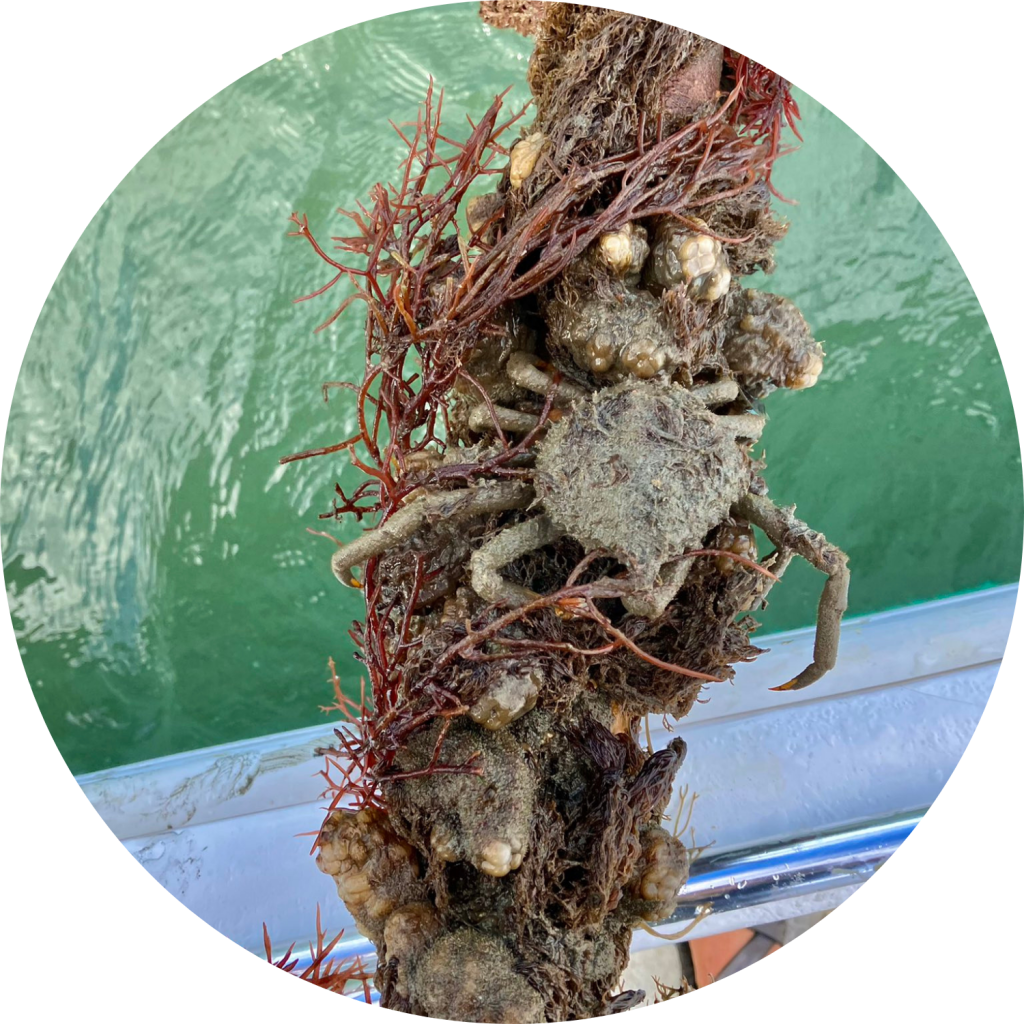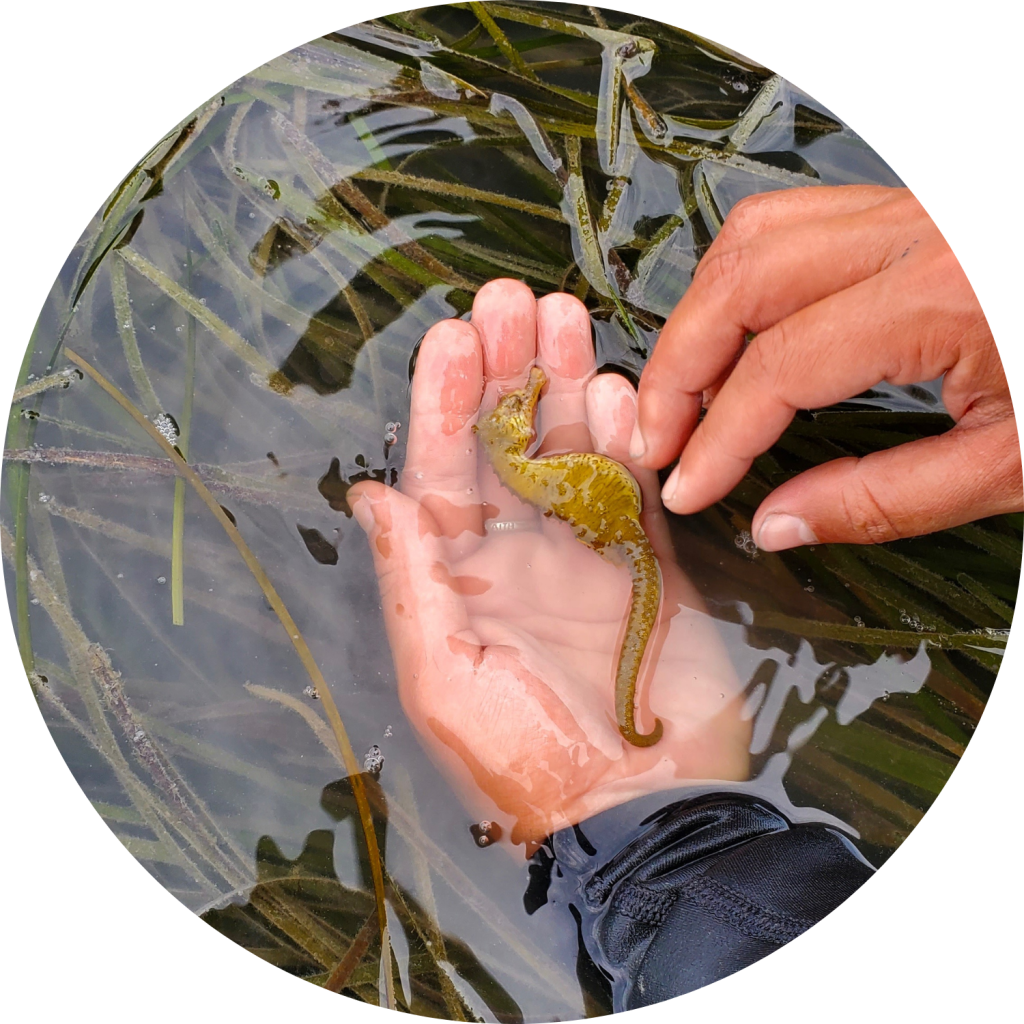• In a 7-year study, summer fish abundance was 4.6 times higher in seagrass meadows relative to nearby unvegetated areas; likewise, seagrass restoration more than doubled fish species richness (Hardison and Castorani, in prep.)
• Adult blue crabs are more numerous in areas of sparse seagrass than dense seagrass(Cheng and Castorani, in prep.)
• Stable isotope (carbon, nitrogen, sulfur) analysis indicates the importance of seagrass detritus to fish inhabiting restored meadows, with a few species showing evidence of live seagrass consumption based on fatty acid markers(Harbeson 2010)
• Inthe restored meadows, seston was a main organic matter source for fish consumers in addition to seagrass detritus; in nearby bare areas, seston and macroalgae were the primary sources (Harbeson 2010)
• Epifaunal invertebrate biodiversity (richness, evenness, functional diversity) were higher in a restored seagrass meadow relative to a reference site with poorer water quality (Lefcheck et al. 2017)
• Biomass of epifaunal invertebrates has increased with the increase and cover of seagrass; biomass per unit area stabilized within 2–4 years of restoration(Orth et al. in review)

